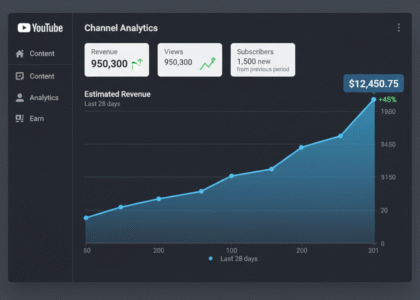Investing in stocks can seem overwhelming, especially if you’re new to the world of investing. With so many options available, learning how to choose stocks wisely is crucial to building a strong portfolio. This guide provides a simple, step-by-step approach to researching and selecting stocks to help you make informed decisions and grow your wealth.
Why Choosing the Right Stocks Matters

Selecting the right stocks is essential for achieving your financial goals. Whether you’re saving for retirement, a major purchase, or simply building wealth, investing in the stock market offers the potential for higher returns compared to other financial tools like savings accounts. However, with higher returns come risks, which is why thorough research is key.
Step 1: Define Your Investment Goals How to choose stocks


Before diving into the stock market, start by identifying your investment objectives. Are you looking for long-term growth, steady income, or short-term gains? Defining your goals will help you determine the type of stocks to focus on.
- Growth Stocks: Ideal for investors seeking long-term capital appreciation.
- Dividend Stocks: Great for those looking for regular income.
- Value Stocks: Suitable for investors seeking undervalued opportunities.
Knowing your goals will shape your research and help narrow your options.
Step 2: Understand the Basics of Stock Analysis

To choose the right stocks, it’s important to understand the two main methods of stock analysis:
1. Fundamental Analysis
This involves evaluating a company’s financial health and long-term prospects by analyzing:
- Revenue and Earnings: Check if the company consistently generates profit.
- Debt Levels: Companies with manageable debt are less risky.
- Management Team: Research the leadership’s experience and track record.
- Industry Position: Consider how the company performs compared to competitors.
2. Technical Analysis
This method focuses on stock price trends and patterns to predict future performance. While technical analysis is more common among short-term traders, it can still provide valuable insights for long-term investors.
Step 3: Use Reliable Financial Tools and Platforms

Leverage reliable tools to simplify your stock research. Here are some options to consider:
- Yahoo Finance: Offers detailed financial reports and historical stock data.
- Morningstar: Great for analyzing mutual funds and individual stocks.
- Seeking Alpha: Provides in-depth articles and market analysis.
- Stock Screeners: Platforms like Finviz help filter stocks based on your criteria.
Using these tools ensures you have accurate data to make informed decisions.
Step 4: Analyze Key Financial Metrics How to choose stocks

When researching stocks, pay attention to the following financial metrics:
- Price-to-Earnings (P/E) Ratio: Indicates whether a stock is overvalued or undervalued compared to its earnings.
- Earnings Per Share (EPS): Measures a company’s profitability.
- Dividend Yield: Shows the return on investment from dividends.
- Debt-to-Equity (D/E) Ratio: Highlights how much debt the company uses to finance operations.
- Return on Equity (ROE): Reflects how efficiently the company generates profit from shareholders’ equity.
These metrics offer a snapshot of a company’s financial health and potential for growth.
Step 5: Diversify Your Portfolio
One of the golden rules of investing is diversification. Instead of putting all your money into one stock, spread your investments across different industries, market caps, and asset types. Diversification reduces risk and ensures that poor performance in one area won’t drastically impact your portfolio.
Step 6: Monitor and Review Your Investments


Stock selection isn’t a one-and-done task. Regularly monitor your investments to ensure they align with your financial goals. Factors like market trends, company performance, and economic conditions can impact stock prices. Stay informed and adjust your portfolio as needed.
Common Mistakes to Avoid When Choosing Stocks
- Chasing Hot Stocks: Avoid investing in stocks solely based on hype.
- Ignoring Research: Always back your decisions with thorough analysis.
- Emotional Investing: Stay rational and avoid making impulsive decisions during market volatility.
- Overlooking Fees: Consider transaction fees or management fees that may impact returns.
Helpful Resources for New Investors How to choose stocks
Explore the following resources to enhance your knowledge:
- Internal Link: Beginner’s Guide to Investing
- External Link: Investing Basics by Investopedia
These resources provide additional insights into building a solid investment strategy.
Summary
Investing in the stock market can be a powerful tool for building wealth, but it requires careful planning and research. By following this step-by-step guide, you’ll be better equipped to make informed decisions and achieve your financial goals. Start by defining your objectives, leveraging reliable tools, and analyzing key metrics to identify promising opportunities.
Discover more tips on achieving financial freedom! Explore GetCashVibe today and take control of your finances!






